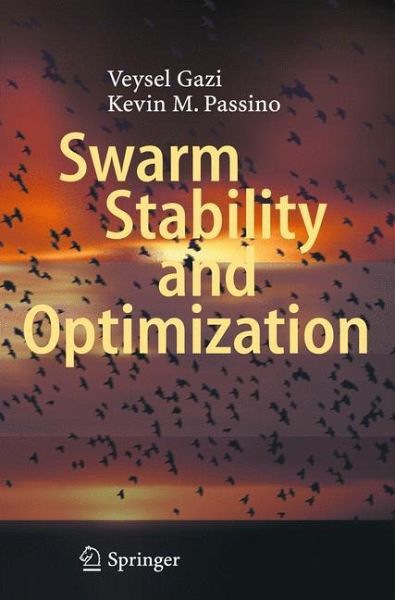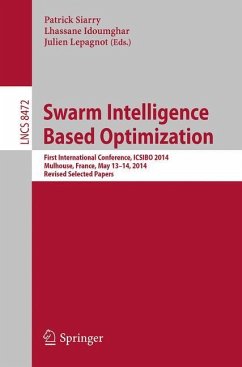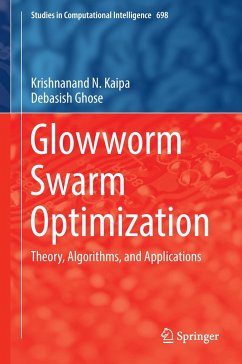
Swarm Stability and Optimization
Versandkostenfrei!
Versandfertig in 6-10 Tagen
113,99 €
inkl. MwSt.
Weitere Ausgaben:

PAYBACK Punkte
57 °P sammeln!
Swarming species such as flocks of birds or schools of fish exhibitfascinating collective behaviors during migration and predatoravoidance. Similarly, engineered multi-agent dynamic systems such as groups of autonomous ground, underwater, or air vehicles ("vehicle swarms") exhibit sophisticated collective behaviors while maneuvering.In this book we show how to model and control a wide range of suchmulti-agent dynamic systems and analyze their collective behaviorusing both stability theoretic and simulation-based approaches. Inparticular, we investigate problems such as group aggregation, socia...
Swarming species such as flocks of birds or schools of fish exhibit
fascinating collective behaviors during migration and predator
avoidance. Similarly, engineered multi-agent dynamic systems such as groups of autonomous ground, underwater, or air vehicles ("vehicle swarms") exhibit sophisticated collective behaviors while maneuvering.
In this book we show how to model and control a wide range of such
multi-agent dynamic systems and analyze their collective behavior
using both stability theoretic and simulation-based approaches. In
particular, we investigate problems such as group aggregation, social
foraging, formation control, swarm tracking, distributed agreement,
and engineering optimization inspired by swarm behavior.
fascinating collective behaviors during migration and predator
avoidance. Similarly, engineered multi-agent dynamic systems such as groups of autonomous ground, underwater, or air vehicles ("vehicle swarms") exhibit sophisticated collective behaviors while maneuvering.
In this book we show how to model and control a wide range of such
multi-agent dynamic systems and analyze their collective behavior
using both stability theoretic and simulation-based approaches. In
particular, we investigate problems such as group aggregation, social
foraging, formation control, swarm tracking, distributed agreement,
and engineering optimization inspired by swarm behavior.














